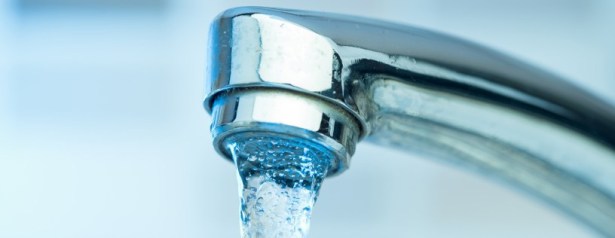What toxicologist says parents should know about PFAS exposure
By Garret Ellison | MLive | September 9, 2019

Read full article by Garret Ellison (MLive)
“Drinking water contamination is a daunting and scary subject, particularly for parents faced with the presence of chemicals like PFAS.
Jamie DeWitt, a pharmacology and toxicology professor at East Carolina University’s Brody School of Medicine, said the first thing parents should know about PFAS is that children are especially sensitive to such contaminants because their bodies are developing.
Children also consume more water relative to body weight than adults do. That means the same glass of water with the same PFAS concentration level results in greater exposure to a child versus an adult, even though they’re drinking the same amount…
‘If they are drinking levels above what’s recommended, parents may want to consider alternative water or treating water at home if they can afford that,’ said DeWitt, who helped draft Michigan’s new proposed drinking water standards for PFAS.
The first step is to know where the drinking water at home, work or school comes from. The next is to determine whether it contains PFAS.
If the water comes from a well, it’s the property owner’s responsibility in Michigan to test for PFAS, although exceptions exist if the home is impacted by a known contamination site. Local health departments don’t test for PFAS; it’s a special analysis that can cost several hundred dollars…
If the water comes from a public supply in Michigan, such as a municipal system, that supply was tested for PFAS last year. The results are available to view here.
Most, but not all, bottled water brands use a purification method that likely removes PFAS. Reputable brands have source water identification and contact information at which to inquire with questions on the label.
For treating water at home to send with children to school in a reusable container, there are options like point-of-use filters (which go under the kitchen sink faucet) or point-of-entry filters (attached to the main water line entering the house; called a ‘whole house’ filter).
DeWitt said reverse osmosis systems are the best at removing all PFAS compounds. They can be pricey, though, ranging from several hundred to several thousand dollars and they require professional installation and maintenance, as well as regular filter changes…
Before deciding whether to spend money on water treatment, it helps to understand what PFAS are, as well as the ongoing debate over and development of safety levels.
PFAS are not just one chemical, like arsenic or trichlorethylene. They are a large group of industrial chemicals made with a varying number of carbon and fluorine atoms. The chemicals are highly prized by industry for their durability and power to repel water, grease and withstand high temperatures. The chemistry has been used in things like food packaging, Teflon non-stick cookware, Scotchgard fabric protector and firefighting foams…
‘I wouldn’t call any of the PFAS “safe,”‘ she said. ‘These are synthetic industrial compounds that are not designed to go in human bodies.’
When a water supply tests positive for PFAS, it generally contains several different versions of the compounds at varying levels of concentration.
Although scientists are still studying the effects of exposure to a mixture of PFAS chemicals, according to the Agency for Toxic Substances and Disease Registry (ATSDR), studies of humans exposed to certain PFAS have shown they can affect the growth, learning, and behavior of infants and older children, lower a woman’s chance of getting pregnant, interfere with natural hormones and the immune system, increase cholesterol levels and increase the risk of cancer.
The U.S. Environmental Protection Agency doesn’t yet regulate any PFAS chemicals as drinking water contaminants. The EPA only has a health advisory level for PFOS and PFOA, either together or combined, of 70 parts-per-trillion (ppt). That’s supposed to be the concentration a person could consume daily over a lifetime without suffering health effects…
Michigan is eying much lower numbers as enforceable standards that some water supplies would be forced install filtration to comply with. Those are for PFNA (6-ppt), PFOA (8-ppt) and PFHxS (51-ppt). Other standards above 70-ppt under consideration are for GenX (370-ppt), PFBS (420-ppt) and PFHxA (400,000-ppt). These are the numbers DeWitt and a team of experts developed at the request of Michigan Gov. Gretchen Whitmer earlier this year. The numbers are not final and could change during the bureaucratic rule-making process.
There have been studies that put the safety level even lower; essentially at zero. Richard Clapp at University of Massachusetts Lowell and Philippe Grandjean at Harvard estimated 1-ppt as the safe PFAS level in drinking water based on research in the Faroe Islands, where exposure through whale meat consumption by indigenous mothers was linked to a 50 percent decline in the effectiveness of vaccinations among breastfed 1-year-olds.
DeWitt said the proposed numbers in Michigan represent different varying probabilities for developing health problems from exposure.
‘If the concentration of PFOA is below 8-ppt, the expected probability of someone developing a negative health outcome is very low, but it’s not zero,’ she said. ‘Similarly, if someone is drinking water above 8-ppt, the probability someone could develop a health effect is higher.’
‘Do we know exactly what that probability is? No. There is probability, but we don’t know if it’s 10, 15, 18, or 100 percent,’ she said. ‘That value might change from Child A to Child B because of differences in genetic makeup, home environment, diet, personal resistance, etc.’
‘There’s so much variability in the environment and so much within people.'”
This content provided by the PFAS Project.
Location:
Topics: